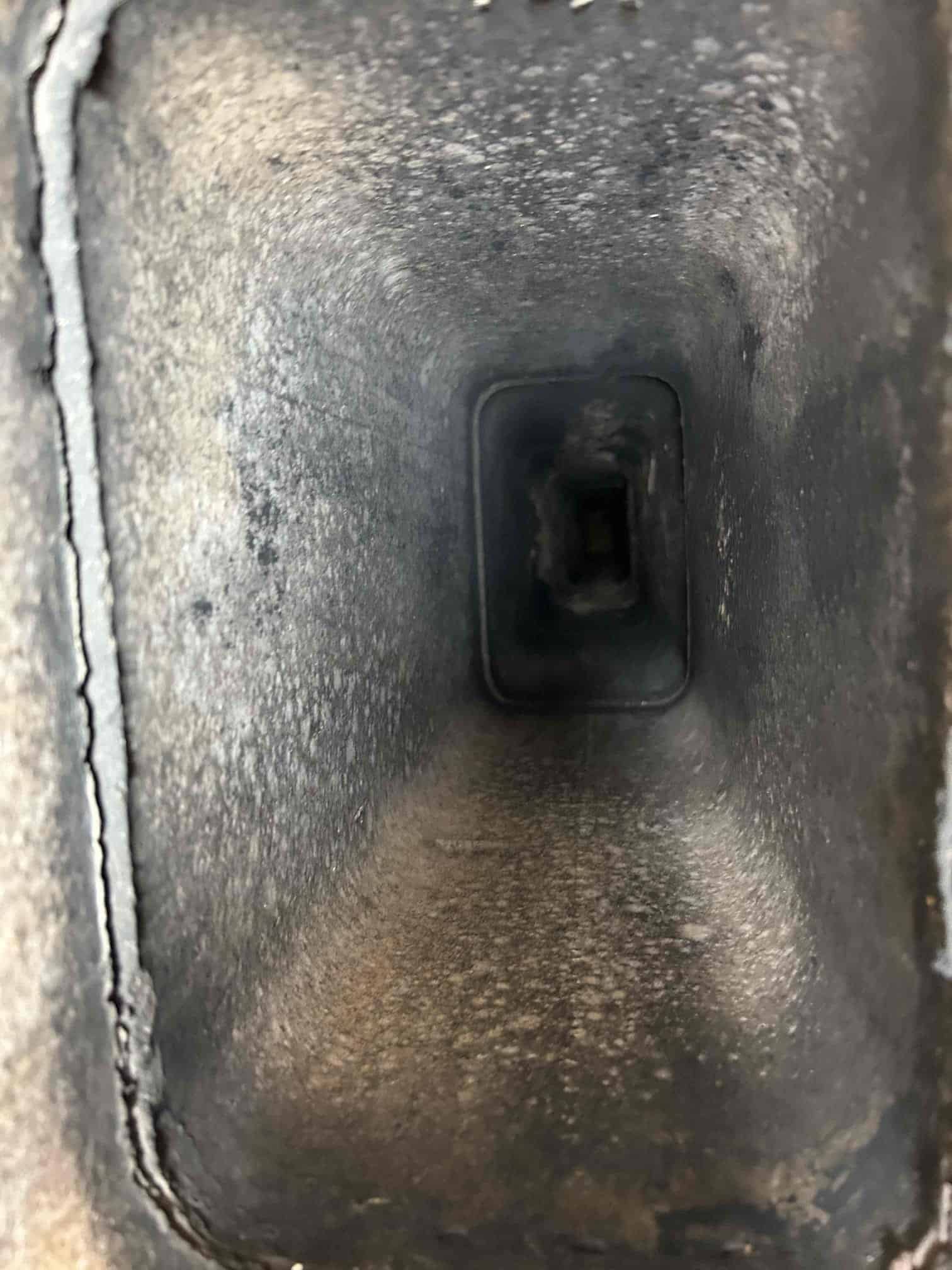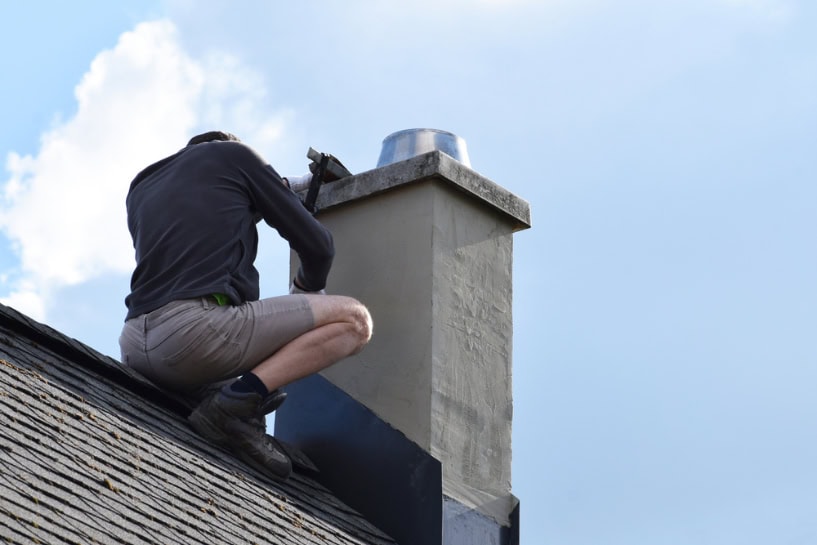
Summary:
Your chimney liner is essentially a protective barrier inside your chimney that guides smoke and gases safely out of your home. Think of it as the unsung hero of your heating system—quietly doing its job until something goes wrong.
These liners cover the inside of your chimney to protect the chimney walls from high temperatures and corrosion. The liner prevents your chimney and roof from breaking down over time. They also help prevent house fires by preventing the chimney from overheating and potentially combusting.
Without a properly functioning liner, you’re essentially playing with fire—literally. Heat and gases can escape into your home’s structure, creating serious safety hazards that most homeowners never see coming.

When your chimney liner starts failing, it doesn’t just affect your fireplace’s performance—it puts your entire family at risk. Over 25,000 chimney fires per year in the US are responsible for over 125 million dollars in property damage. Many of these fires start with compromised liners that homeowners didn’t know were damaged.
Cracks can allow heat, smoke, and gases to escape into the surrounding structure – which is a big safety risk. Even small gaps in your liner can let carbon monoxide seep into your living spaces, creating a silent but deadly threat.
The scary part? By the time flue liner damage is starkly obvious to the homeowner, the damage is usually quite advanced. That’s why knowing what to look for is so crucial. Your liner might be crying for help right now, and catching the signs early could save your home—and your family.
The typical lifespan of a chimney liner is somewhere between 15 and 20 years, at which point you will likely need to have your liner replaced just to meet modern building code. However, there are many instances where you’ll need to replace your chimney liner before it gets to the 20-year mark. Some inexpensive clay liners can give out after just five years.
Don’t wait for a crisis. Understanding these warning signs gives you the power to act before a small problem becomes a major disaster.
Gone are the days when chimney inspections meant guesswork and flashlights. Today’s technology is revolutionizing how we assess chimney liner condition, making it easier than ever to catch problems early.
We use the most modern, state-of-the-art video equipment to check the total condition of your chimney. The chimney camera gives us the ability to go inside the flue and see things we’d never be able to see during a typical chimney inspection using just a flashlight and the naked eye. The camera image is viewed on a monitor and since it’s done digitally, we can even make a digital recording and take snap shots of the chimney system!
But here’s where it gets really interesting: Modern drones come with high-resolution cameras. This means inspectors can see even tiny cracks or damage that might be missed with the naked eye. These aren’t just fancy gadgets—they’re game-changers for homeowner safety.
With drones, an inspection can be completed quickly and with minimal risk. Drones are equipped with advanced technology such as thermal imaging cameras, which can detect heat signatures from the chimney. This means we can spot problems that traditional methods might miss entirely.
For Rhode Island homeowners, this technology boom means more accurate assessments, faster inspections, and better peace of mind. You’re not just getting someone’s best guess about your liner condition—you’re getting hard data that helps you make informed decisions about your home’s safety.
The combination of video cameras and drone technology gives us the tools to provide thorough, accurate assessments that protect your investment and your family’s safety.
Want live answers?
Connect with a Certified Chimney Inspections expert for fast, friendly support.
Your chimney liner doesn’t fail overnight—it gives you warning signs. The key is knowing what to look for and taking action before small problems become big dangers.
These seven signs are your early warning system. Some you can spot yourself during a quick visual check, while others require professional assessment. Either way, catching them early could save you thousands in repairs and protect your family from serious safety hazards.

No matter what your liner is made of (clay, metal, or a cast-in-place material), visible cracks or missing sections are a definite warning sign. If you can see damage with your own eyes, you’re already dealing with a serious problem.
Take a flashlight and look up the interior of the chimney to see if you can spot cracks, gaps, or missing mortar joints in the liner. Pay special attention to any pieces of tile or masonry that might have fallen into your fireplace. Small pieces of broken tile or mortar falling into your firebox is a top sign that the liner is deteriorating from the inside out.
For metal liners, rust or corrosion can be a clear sign of liner deterioration. This is common in older stainless steel and aluminum liners. Don’t ignore these warning signs—they’re telling you that your liner is losing its ability to protect your home.
Cracks can allow heat and gases to escape into surrounding walls in your home which increases the risk of a chimney fire. Even small cracks can become big problems fast, especially when exposed to the extreme temperature changes that come with regular fireplace use.
The bottom line: if you can see damage, don’t use your fireplace until we’ve assessed the situation. What looks like a small crack could be hiding much bigger structural problems.
Sudden smokiness and odors. Gaps or damage in the liner can’t direct gases out of your home and they may back up into your living space, causing an increase in smoke and foul smells. If your fireplace suddenly starts smoking up your room or you’re noticing strange odors, your liner might be the culprit.
Poor heating efficiency – If fires are smoky or hard to start, your liner may be restricting proper airflow. A damaged liner can’t create the proper draft needed for efficient burning, leading to frustrating fires that won’t stay lit or produce more smoke than heat.
Smelling smoke inside your home during a fire may be normal, but if it gets excessive, that could be a sign that your chimney gases aren’t properly ventilating. A struggling furnace or wood stove may be the result of a damaged liner not creating enough draft.
Here’s what many Rhode Island homeowners don’t realize: these performance issues aren’t just annoying—they’re dangerous. When your liner can’t do its job properly, harmful gases like carbon monoxide can back up into your home instead of venting safely outside.
Pay attention to changes in your fireplace’s behavior. If fires that used to burn cleanly are now smoky, or if you’re noticing odors when the fireplace isn’t even in use, don’t ignore these signs. Your liner is trying to tell you something important, and listening could prevent a serious safety incident.
Winter waits for no one, and neither should your chimney safety. The importance of yearly chimney inspections and sweepings cannot be understated, as they are the one true way to minimize the likelihood of a chimney fire sparking in the first place. The fact is that clean chimneys simply don’t catch fire.
If you’ve spotted any of these warning signs, don’t gamble with your family’s safety. The only way to accurately determine the condition of your chimney liner and the necessity of replacement is to have your chimney professionally inspected. The Chimney Safety Institute of America (CSIA) recommends that this be done annually.
The good news? You don’t have to face this alone. We’ve been protecting Rhode Island families for over two decades with certified technicians, modern inspection technology, and the expertise to catch problems before they become disasters. Don’t let another heating season pass without knowing your chimney is ready to keep your family safe and warm.